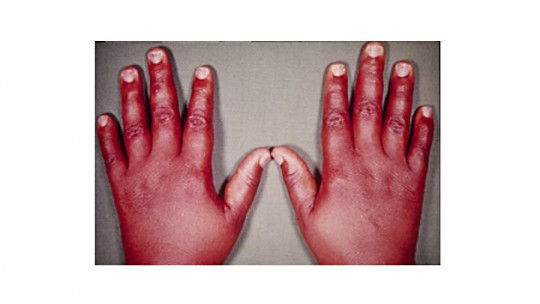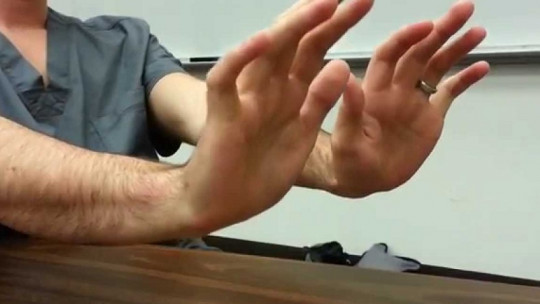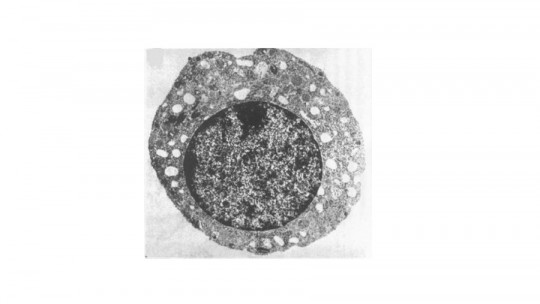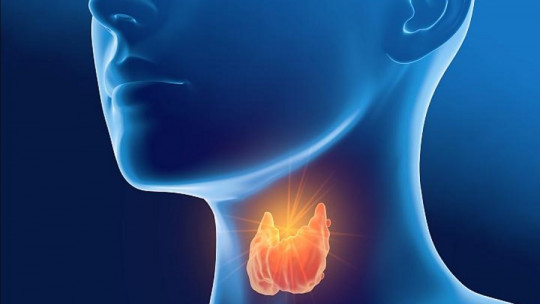Among the rarest symptoms and conditions that can be found, adipsia is one of the most surprising This medical problem is the total absence of thirst, even when the body needs urgent hydration.
The theories behind this strange problem relate both to problems in specific areas of the brain and problems in the regulation of neurotransmitters, salts in the blood and hormones.
Below we will see in more depth what adipsia is, what its causes are, why it is difficult to diagnose it and what its treatment is.
What is adipsia?
Adipsia, also known as hypodipsia, is a medical condition in which the patient has a total absence of thirst, that is, there is a lack of desire to drink liquids , even when the body has little water or has an excessive amount of salts. It is normal not to feel thirsty throughout the day if you are well hydrated, however, in adipsia the issue is that there is a physiological need to drink water, but it is not felt.
This medical condition has been related to an increase in the osmolarity or concentration of solutes in the urine, which stimulates the secretion of antidiuretic hormone (ADH) from the hypothalamus to the kidneys. As a consequence of this, the person does not have the subjective sensation of thirst, since receives physiological signals that the body has enough water
Adipsia is a fairly rare symptom and, although some theories have been put forward as to why it occurs, it is still not known for sure what the process behind the appearance of this condition is. What is known is that it can be related to medical conditions such as diabetes insipidus and hypernatremia, that is, high levels of sodium in the blood. Also It is known that the hypothalamus, pituitary and corpus callosum could be involved in a lack of thirst
Causes
There are two main theories to explain the appearance of adipsia. One of them has to do with the neurotransmitter dopamine, closely related to eating behavior, while the other points to dysfunctions and injuries in the hypothalamus.
Dopamine
Dopamine is a neurotransmitter that has been linked to eating behavior The absence of this substance has been studied in mice in which the dopamine regulation system has been affected, measuring how much food and water the rodents consumed without this substance.
Research indicated that the mice without dopamine, since they did not eat or drink on their own as they had no interest in doing so, would have ended up dying of starvation and dehydration if they had not been forced to eat.
In these same mice, the scientists injected the chemical precursor of dopamine, L-DOPA, which caused the rodents to start eating on their own. Although the mice were born without dopamine systems, injecting them with the substance awakened eating behavior.
Although the lack of dopamine caused the mice to manifest adipsia, those with low levels of this substance did not appear adiptic. They wanted to drink and eat when their bodies needed it. Based on this, It has been questioned whether dopamine is really the determining substance in the absence of thirst
Still, another theory suggests that dopamine is heavily involved in thirst, especially in the nigrostriatal pathway. If this pathway is severely impaired, the animal becomes adiptic, aphagic and loses interest in exploring the environment.
hypothalamus
The hypothalamus is an important region of the brain, in which the area that regulates thirst is located, specifically its anterior part This structure is close to osmoreceptors, which regulate the secretion of antidiuretic hormone or ADH.
ADH is one of the main mechanisms by which sodium levels are regulated and osmolar homeostasis is carried out. When there are low increases in osmolarity in the blood serum, this hormone is secreted.
Thirst would be the subjective sensation resulting from increased blood serum osmolarity levels, which have led to an increase in the secretion of antidiuretic hormone. It is an indicator that fluids must be consumed to return to homeostasis.
Based on this, Adipsia could be explained by lesions in the hypothalamic regions involved in the regulation of thirst These injuries could be congenital, acquired, due to trauma or even some type of surgery.
It can also be explained by the presence of a bronchial tumor that causes the syndrome of inappropriate secretion of antidiuretic hormone, hydrocephalus, and stroke near the hypothalamus.
Diagnosis
Diagnosing adipsia is not an easy task because There is no set of physical and objective signs that allow it to be clearly established that the patient suffers from this condition , except for his lack of thirst. This condition is, in turn, a symptom, and can come in the company of other medical conditions such as hyperpnea, muscle weakness, insomnia, lethargy and seizures.
As it has been related to dysfunctions in the hypothalamus, if the patient who indicates that he is not thirsty has a history of brain tumors or congenital malformations, the alarms go off. It is also important make sure the person has not suffered a brain injury recent that can explain the symptom, verifying it with neuroimaging techniques.
To check if there are organic problems, it is necessary to perform different analyzes. Among the tests that can be performed we have electrolyte analysis, blood urea nitrogen analysis, and checking creatinine levels The osmolarity in the blood serum and urine is also monitored, in addition to the presence of hormones in the blood, such as vasopressin. In fact, vasopressin is an indicator of adipsia, since in this condition it is found at very low levels.
Treatment
As we have already mentioned, people who have adipsia show a pathological lack of thirst, although they do not have physical difficulties that prevent them from consuming liquids. By not receiving the physiological signal that they have to drink when necessary, Adiptic people need to be educated and trained in a fluid consumption routine to avoid dehydration. It is not about making them drink all the time, but rather making them do it every so often, to ensure that the body has a sufficient amount of liquid.
There is no drug to cure adipsia, although, as long as the person is properly hydrated, the presence of this condition does not imply serious organic damage. The patient can play sports and continue with his normal diet, incorporating the necessary water, unless his doctor has indicated otherwise.
People suffering from diabetes insipidus have the option of using the hormone desmopressin acetate intranasally or orally , which is molecularly and functionally similar to vasopressin, making the person feel thirsty when it is necessary to hydrate the body. Desmopressin helps the kidneys reabsorb water.









